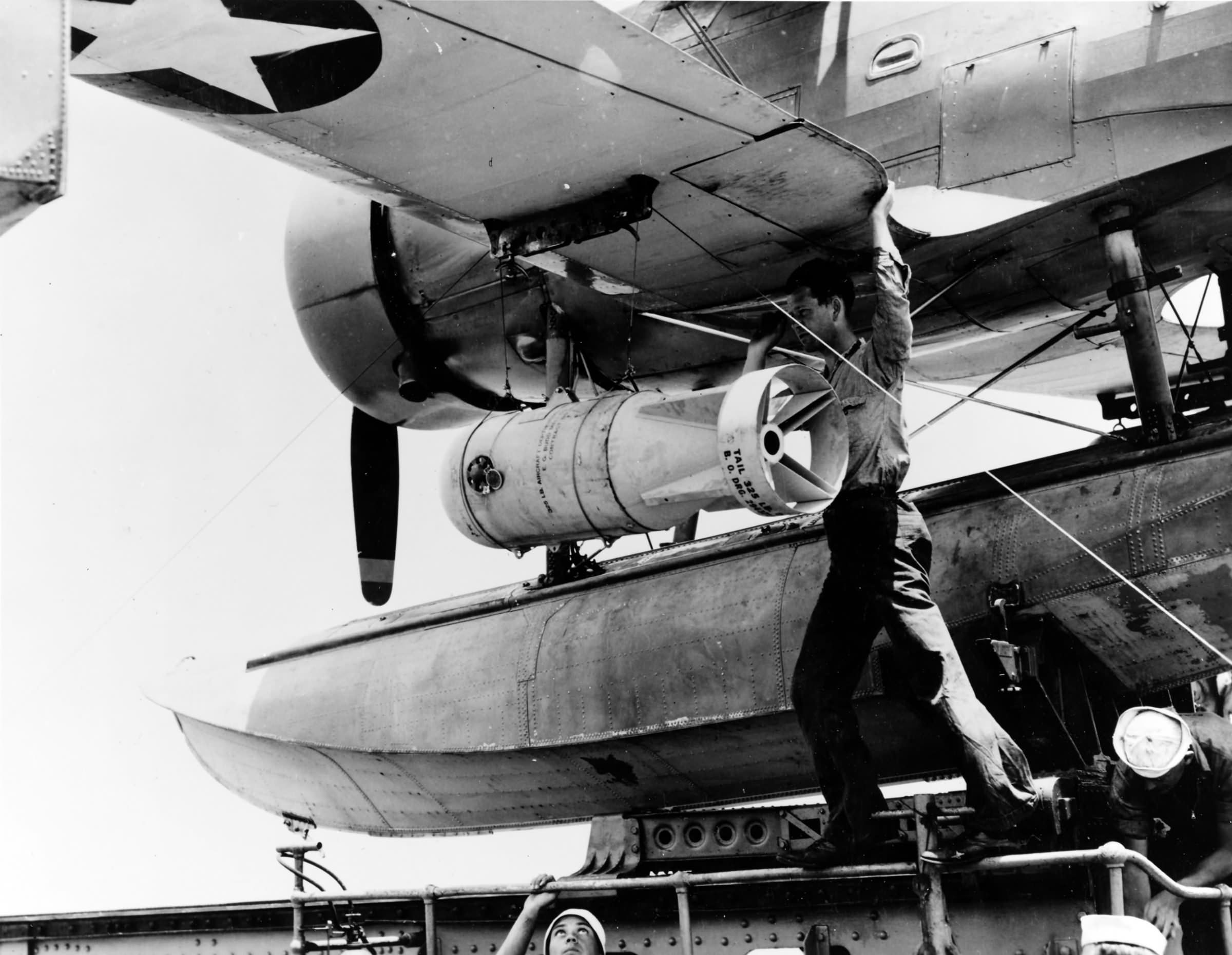By August 1943, the United States had developed a substantial and varied arsenal of aerial depth charges, primarily derived from two basic types: the 325-pound Mark 17 and the 650-pound Mark 29. These two types served as the foundation for a range of depth charges, each with specific modifications to improve their effectiveness against German U-boats.
The Mark 17 Series
Mark 17: This was the first operational depth charge of the series, introduced in April 1942. It weighed 325 pounds, measured 15 inches in diameter and 52.5 inches in length, and contained 234 pounds of TNT. The Mark 17 had a lethal range of about 17 feet from a U-boat’s pressure hull. However, the Mark 17 had a rounded nose, which caused it to “kip” or ricochet upon impact with the water. This issue was addressed by adding a flat-nosed attachment in subsequent models.
Derived Models:
- Mark 41 and Mark 47: These were modified versions of the Mark 17, with the Mark 41 and Mark 47 being filled with Torpex instead of TNT, which provided greater explosive power. The flat-nosed attachment helped prevent kipping and improved the depth charge’s underwater stability.
- Mark 44: A Torpex-filled version of the Mark 17, enhancing its explosive power and effectiveness.
- Mark 53 and Mark 54: Introduced later in the war, these versions were also filled with Torpex and featured a hydrostatic fuse. The Mark 54 remained in service for 30 years, showcasing its effectiveness and durability.
- Mark 75: A thicker-cased, limited version of the series.
The Mark 29 Series
Mark 29: Introduced in May 1942, the Mark 29 was the larger of the two primary types, weighing 650 pounds and measuring 18 inches in diameter and 67 inches in length. It contained between 425 and 450 pounds of TNT. However, the Mark 29 suffered from several design flaws, including a weak tail and an unstable underwater course. Its round nose also caused it to skip across the surface, which could result in premature detonation and pose a danger to the attacking aircraft. The addition of a flattened nose helped mitigate this risk.
Derived Models:
- Mark 35: A TNT-filled version of the Mark 29 with unspecified modifications.
- Mark 37: Featured a new tail design to improve underwater stability.
- Mark 38: A shorter version, measuring 61 inches in length, with an increased explosive charge of 425 pounds of TNT. This version continued as a primary 650-pound depth charge.
- Mark 48: An enlarged version of the Mark 29, measuring 18.6 inches in diameter and 68 inches in length, and weighing 850 pounds.
- Mark 49: A further modification, this depth charge was filled with 472 pounds of Torpex, enhancing its explosive power.
- Mark 71: A variant of the 525-pound M64 General Purpose bomb, modified to function as a depth charge and equipped with a hydrostatic fuse.
These depth charges represented significant advancements in anti-submarine warfare technology during World War II, addressing the various challenges encountered in earlier models and contributing to the eventual success of Allied efforts to counter the U-boat threat.
